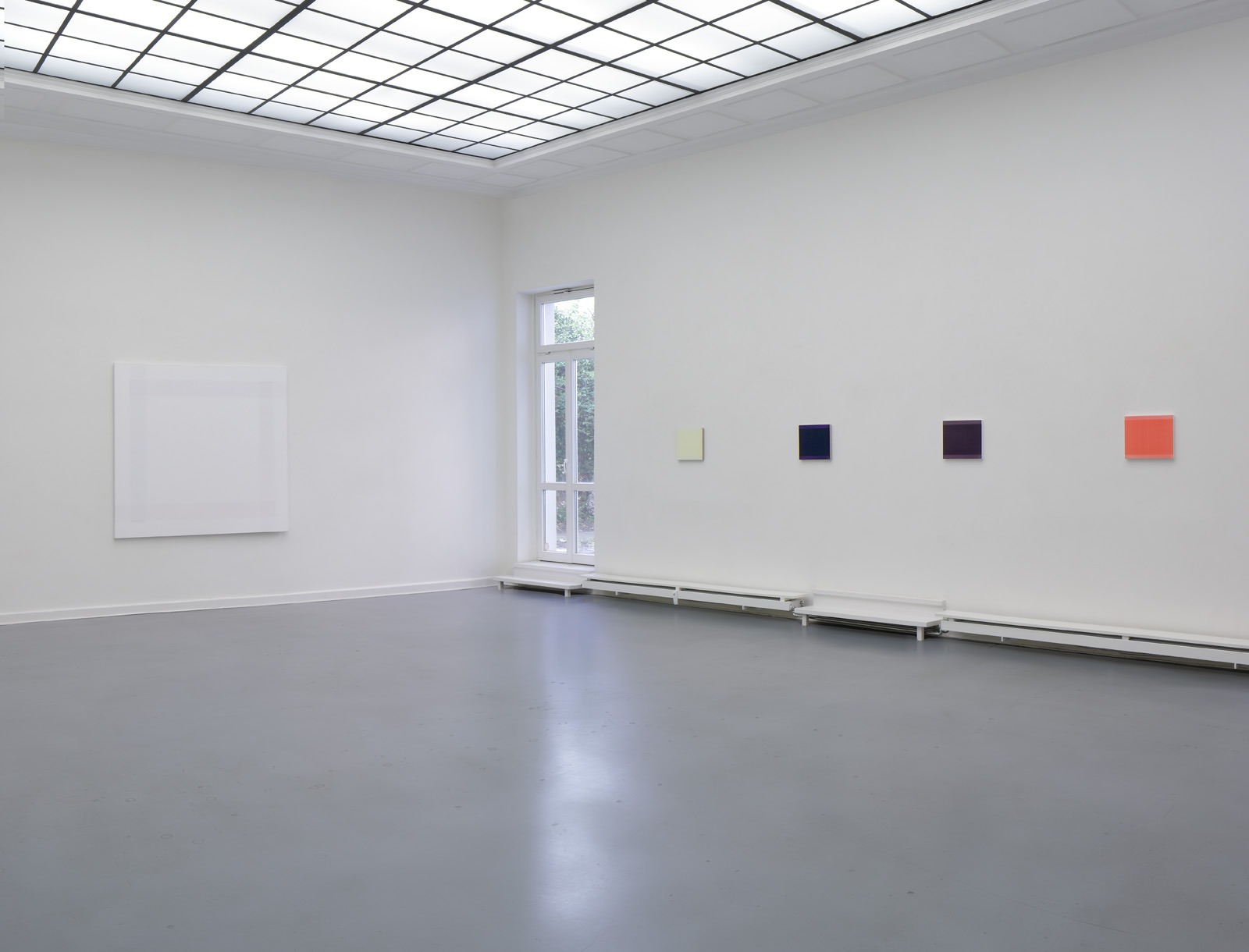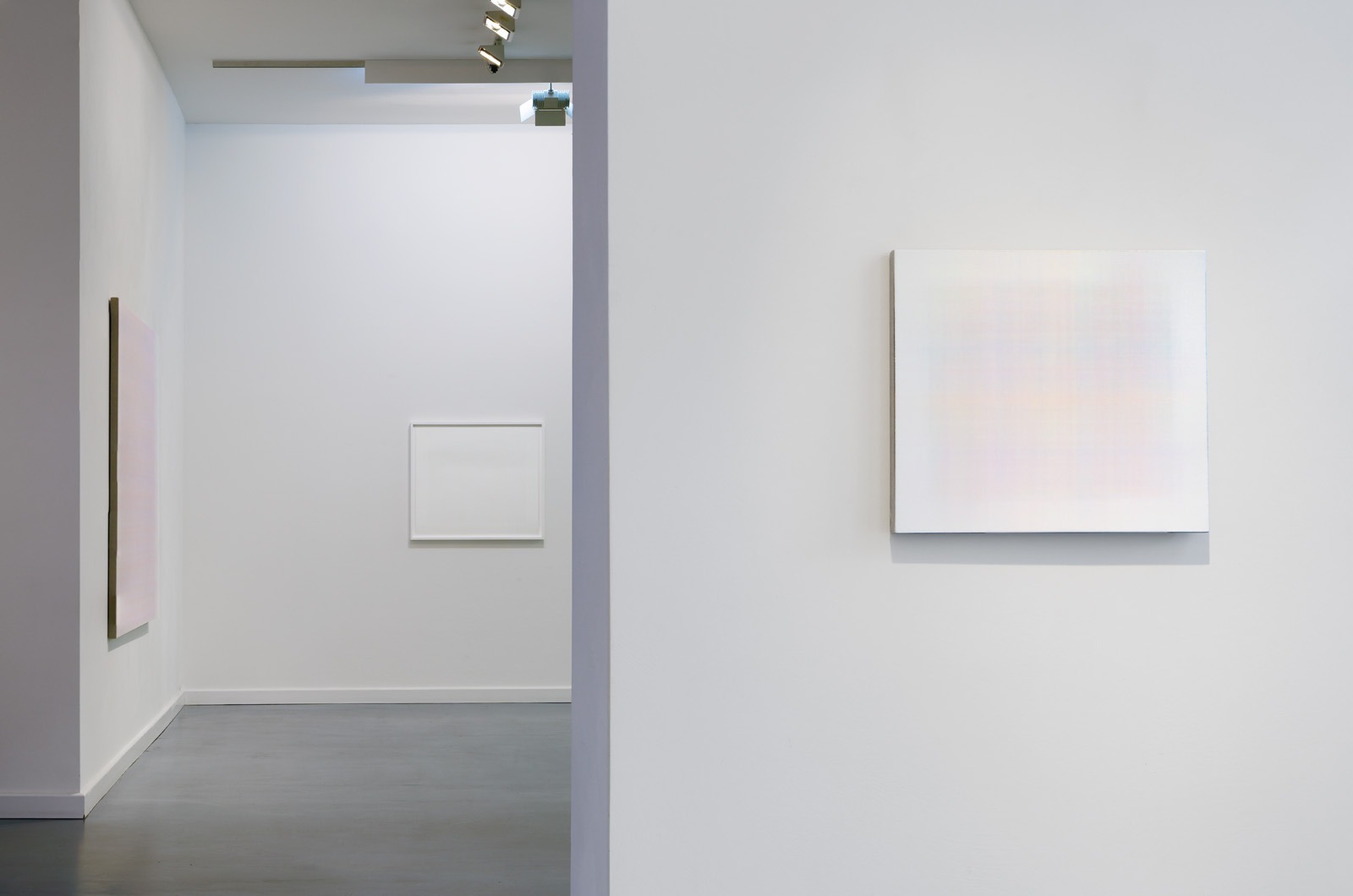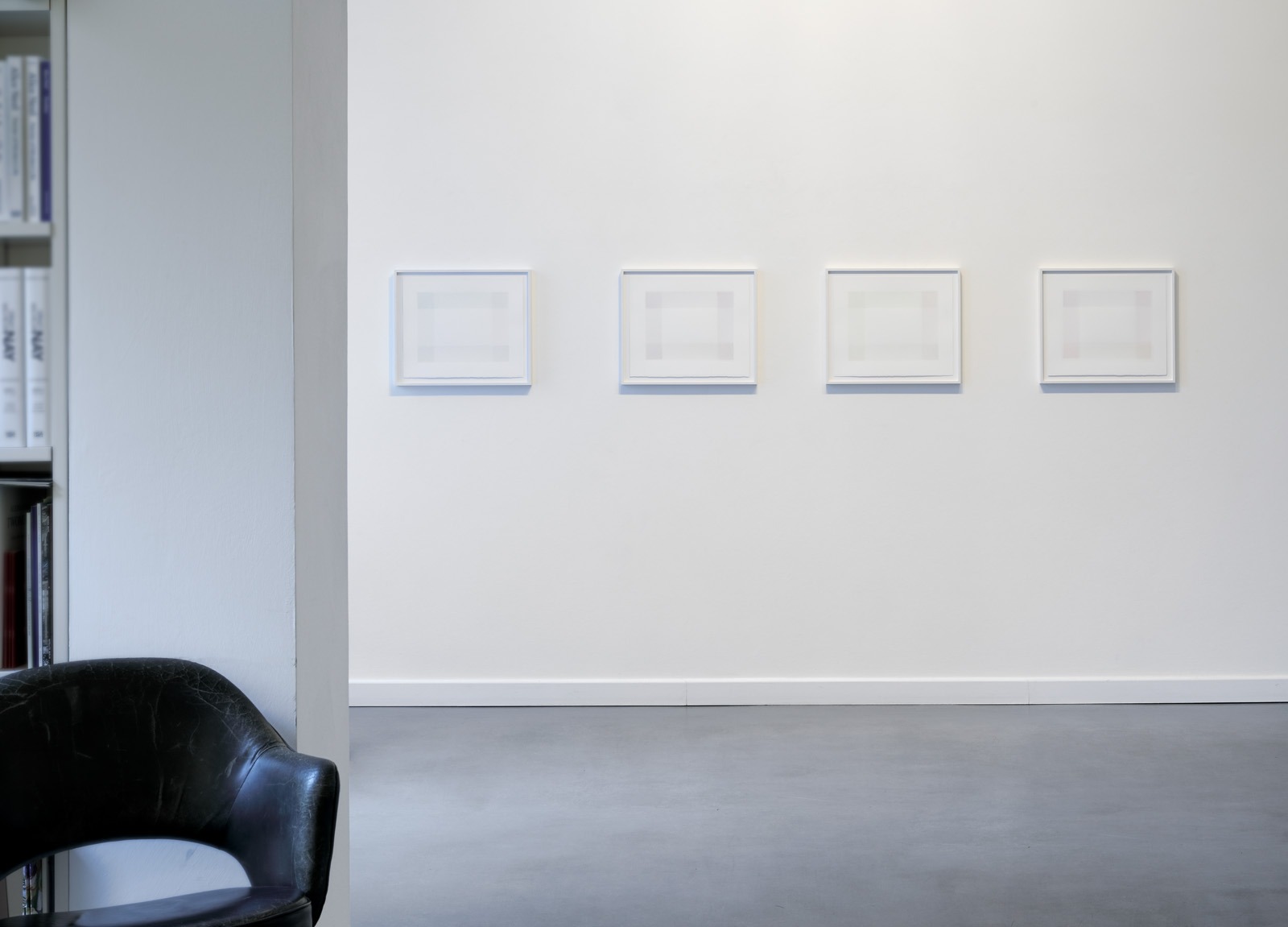MORENDO
Tom Chamberlain
11 Sep - 09 Nov 2019
Tom Chamberlain’s works appear as unstable bodies. They challenge perception and resist translation into language. Our eyes wander over the surface of the painting, searching in vain for something to hold on to, for looking at his works invokes a loose chain of isolated impressions that cannot be immediately gathered into coherence. This perceptual process resembles
listening to music - a sequence of single tones becomes a melody in mind only with the passage of time. The colours in Tom Chamberlain’s paintings are so dilute as to be almost beyond perception, so that one is compelled to continuously look anew. Similarly to the processes of making, a painting gradually unfolds in front of the viewer over time. What has just been seen
quickly evaporates; like morendo in music – the dying away of the tone – it resonates only as a vague echo. Perception is nothing more than a construct of the brain. The moment before cognition merely contains assumptions the mind makes based on previous experience accompanied by vision: we only see what we already know. But it’s rather hard to identify Tom
Chamberlain’s paintings as such. Even the canvas reveals no hint of its own structure and the paint applied in multiple thin layers carries no traces of brush. Thelayers are highly precise and therefore utterly incomprehensible. They are extremely concrete and at the same time indefinite. When the work doesn’t expose the traces of its own making and can hardly be understood as a personal expression, its capacity to transmit meaning remains precarious. However, the abstraction Tom Chamberlain pursues is exactly the one that addresses substantial concerns. His works mark the line between the “naught” and the “being”. These terms, and the one of “becoming”, start Hegel’s study of the logic. His “pure being” is not subject to external circumstances and should be understood as the indeterminate immediate.
Abstract painting for Tom Chamberlain is intended to produce abstract experience. It’s something not yet spoken and not yet present that constitutes the abstraction something that might appear or die away.
Morendo is the fourth solo exibition by Tom Chamberlain (born 1973 in England) at Aurel Scheibler gallery.
listening to music - a sequence of single tones becomes a melody in mind only with the passage of time. The colours in Tom Chamberlain’s paintings are so dilute as to be almost beyond perception, so that one is compelled to continuously look anew. Similarly to the processes of making, a painting gradually unfolds in front of the viewer over time. What has just been seen
quickly evaporates; like morendo in music – the dying away of the tone – it resonates only as a vague echo. Perception is nothing more than a construct of the brain. The moment before cognition merely contains assumptions the mind makes based on previous experience accompanied by vision: we only see what we already know. But it’s rather hard to identify Tom
Chamberlain’s paintings as such. Even the canvas reveals no hint of its own structure and the paint applied in multiple thin layers carries no traces of brush. Thelayers are highly precise and therefore utterly incomprehensible. They are extremely concrete and at the same time indefinite. When the work doesn’t expose the traces of its own making and can hardly be understood as a personal expression, its capacity to transmit meaning remains precarious. However, the abstraction Tom Chamberlain pursues is exactly the one that addresses substantial concerns. His works mark the line between the “naught” and the “being”. These terms, and the one of “becoming”, start Hegel’s study of the logic. His “pure being” is not subject to external circumstances and should be understood as the indeterminate immediate.
Abstract painting for Tom Chamberlain is intended to produce abstract experience. It’s something not yet spoken and not yet present that constitutes the abstraction something that might appear or die away.
Morendo is the fourth solo exibition by Tom Chamberlain (born 1973 in England) at Aurel Scheibler gallery.






